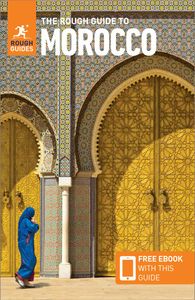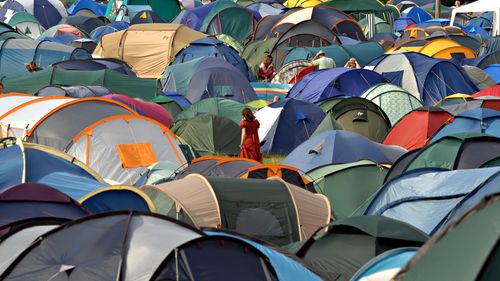Brief history of Essaouria
A series of forts were built here from the fifteenth century but it was only in the 1760s that the town was established and the present circuit of walls constructed. It was known to Europeans as Mogador, possibly from the prominent koubba of Sidi Mgdoul, used for navigating entry to the bay. Less likely is the legend that the town’s patron saint was a Scotsman named McDougal who was shipwrecked here in the fourteenth century. To Moroccans it was known as Seurah, from the Berber “little picture”.
The walls were commissioned by sultan Sidi Mohammed Ben Abdallah, and carried out by a French military architect, Theodore Cornut, which explains the town’s unique blend of Moroccan Medina and French grid layout. The original intention was to provide a military port, as Agadir was in revolt at the time and Sultan Mohammed Ben Abdallah needed a local base. Soon, however, commercial concerns gained pre-eminence. During the nineteenth century, Mogador was the only Moroccan port south of Tangier that was open to European trade, and it prospered greatly from the privilege. Drawn by protected trade status, and a harbour free from customs duties, British merchants settled in the kasbah quarter, and a large Jewish community in the Mellah, within the northeast ramparts.
Decline set in during the French Protectorate, with Marshal Lyautey’s promotion of Casablanca. Anecdote has it that he arrived in Essaouira on a Saturday when the Jewish community was at prayer; he cast a single glance at the deserted streets and decided to shift to the port of Casablanca further up the coast. The decline was accelerated after independence, by the exodus of the Jewish community. These days, however, the town is very much back on its feet, as a fishing port, market town and ever-more-popular resort. Orson Welles’ 1952 film Othello was largely shot in Essaouira, and opens with a tremendous panning shot of the Essaouira ramparts, where Welles placed a scene-setting “punishment” of Iago, suspended above the sea and rocks in a metal cage.
Essaouira art galleries
Essaouira has become quite a centre for painting and sculpture, and many of its artists have made a name for themselves in both Morocco and Europe. Artists with their own distinctive styles tend to have an entourage of second-rate imitators, so it’s worth checking that the artist whose works you’re looking at really is the one whose work you were interested in, as it should be in any of the galleries listed here.
- Association Tilal 2 Rue du Caire
A gallery exhibiting the work of half a dozen or so local painters with quite distinctive styles. Many of the pieces exhibited here have been knocked up quickly to sell at low prices: to buy some of the artists’ better work, you’ll have to speak to them personally and perhaps commission something. The association should be able to put you in touch. Daily 8.30am–12.30pm, 2.30–7pm.
- Espace Othello 9 Rue Mohammed Layachi, behind the Hôtel Sahara
Owned by a Belgian, originally as an overflow for the artwork he was exhibiting in his nearby restaurant; it’s now a standalone gallery, with paintings and sculptures by local artists. Daily 9am–1pm & 3–8pm.
- Galerie d’Art Frederic Damgaard Av Okba Ibn Nafia
Paintings and sculptures by twenty or so locally based artists, in a gallery run by a Danish furniture designer, who uses the traditional thuya techniques in a highly imaginative, modern context. There’s also an atelier (workshop) at 2 Rue el Hijalli, just off Pl Chefchaouni. Daily 9am–1pm, 3–7pm.
- La Petite Galerie Just off the north end of Pl Prince Moulay el Hassan in the passage through to Rue Ibn Rochd
A small but well-chosen selection of works by local painter Slimane Drissi. Daily 9am–9pm.
Watersports around Essaouira
Essaouira and its nearby beaches are Morocco’s prime wind- and kitesurfing destinations, drawing enthusiasts throughout the year. The trade wind at Essaouira is northwesterly and blows year-round; it’s stronger in summer – if you’re inexperienced try to get out early in the morning – but the swell is bigger in winter. The winds can be quite strong (sails required are 5.03.5) but the curved shape of Essaouira’s bay, along with a gently sloping sandy bottom that creates a wide shallow area along the shoreline, makes it ideal for novices. Even during summer the water temperature rises only to 20°C maximum, so a wet suit is required all year. There are numerous surf shops and schools in Essaouira, as well as one or two in Sidi Kaouiki and Point Imsouane further south. Surfers should be warned that for most of the year Essouaria’s nonstop winds, though great for windsurfing, can be a disappointment for board surfing and you might be better off down at Point Imsouane with its easterly facing bay.
Equipment
- Gipsy Surfer 14 Rue de Tetouan
Sells new and used surfing and windsurfing equipment, as well as a small range of accessories, surfwear and surfing DVDs.
- Club Mistral Hotel Ocean Vagabond
Has a surf school at the far southern end of the beach where it also offers kitesurfing lessons and rents out kayaks, surfboards, kitesurfing and windsurfing equipment.
- No Work Team 2 Rue Skala & 7 Rue Houmam el Fatouki
This British-owned place sells surfwear and surfing equipment from its two shops.
- The Royal Windsurfing Club (Royal Club de Planche à Voile) Av Mohammed V
Offers windsurfing lessons.
The Île de Mogador
Out across the bay from Essaouira lie the Îles Purpuraires, named from the dyes for purple imperial cloth that the Romans once produced on the islands from murex shellfish. Here also, Sir Francis Drake ate his Christmas lunch in 1577, commenting on the “verie ugly fish”. The largest of the islands, known as the Île de Mogador, is flanked on each side by a fort which, together with the fort on the islet just off the town harbour and the Bord el Berod on the beach, covers all possible approaches to the bay. It also has a small harbour, a mosque, a few rusting cannons and a nineteenth-century prison used for political exiles but long closed. There was a Phoenician settlement on the landward side of the island in the late seventh century BC.
Nowadays the island is a nature reserve, and the only non-Mediterranean breeding site of Eleonora’s falcon, Morocco’s most dramatic bird, which is best seen with binoculars from the beach, in the early evening half-light. The falcons are summer visitors to Morocco, staying between May and October before heading south to Madagascar for the winter. They are often seen hunting over the dunes south of Oued Ksob. The nearby river course also has many waders and egrets and occasional rarities such as gull-billed tern and Mediterranean gull.






















